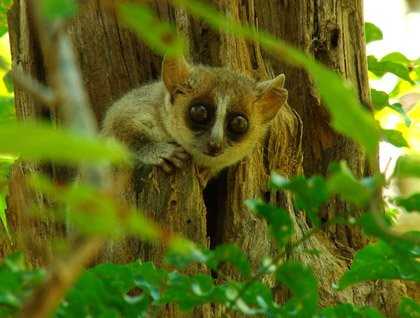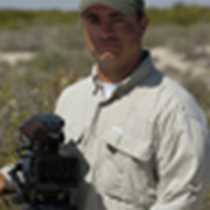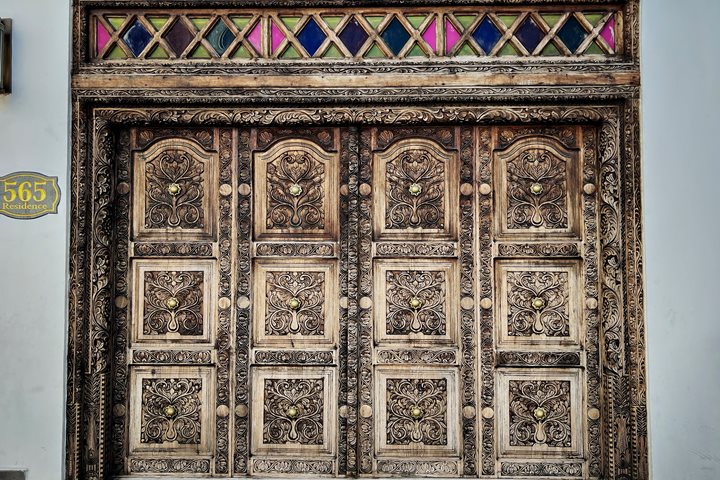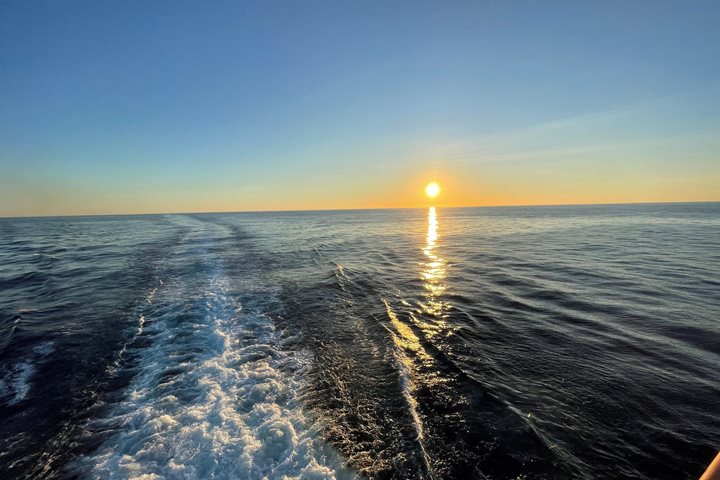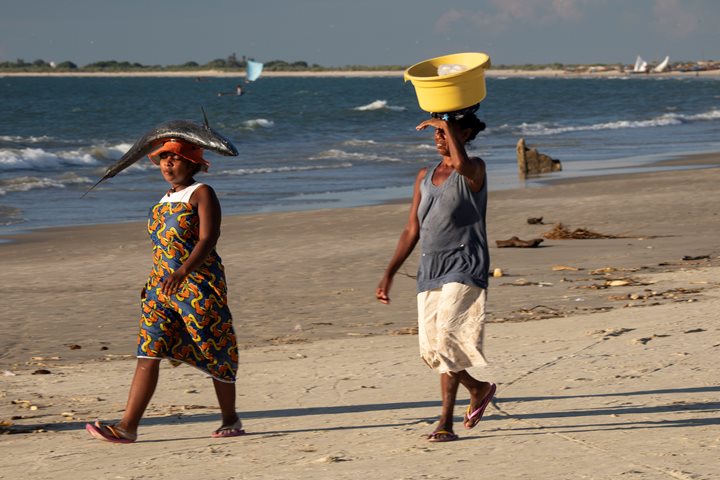Our final full day of expeditions dawned with the promise of Madagascar’s most intriguing wildlife, and we were not disappointed. We had a full day excursion to appreciate this very special island and all the unique flora and fauna Madagascar has to offer. With National Geographic Orion anchored near to the port city of Mahajanga, we readied ourselves for a full day in Ankarafantsika National Park.
Our day began with a morning Zodiac ride to shore, and we disembarked into a small fleet of mini-buses for the drive to the park. It was a journey of about three hours, and we were glad to stretch our legs afterwards on guided walks through the Malagasy forest.
We enjoyed seeing several of Madagascar’s reptiles, including rhinocerous chameleons, skink lizards, and spiny tailed lizards (which is actually an iguana). And of course, there were plenty of native forest birds. Across the whole group, there were many special sightings of endemic species. There were several kingfishers, including a pygmy kingfisher and Malachite kingfisher. Other bird highlights included the white-headed vangashrike, crested drongo, and paradise flycatchers, which were near to their nest, although there were no eggs. Rounding out our bird list for the day was a sighting of the popular fish eagle.
And, of course, there were lemurs. Just near our lunch site, as we arrived, were half a dozen Coquerel’s sifakas, a type of lemur that is not often seen. They were mostly resting and gave us an excellent photographic opportunity, as they seemed to be not at all afraid of human visitors. Some guests were fortunate enough to see three mouse lemurs, which are generally nocturnal, but who today were peeking out of the hollow of a tree, just a few feet off the ground. These three were of a recently described species of mouse lemur.
It was very special to have Patricia Wright with us, whose renowned expertise of lemurs has been enlightening us for the whole voyage. Nearly fifty of her staff of eighty-five from the Centre ValBio research station in Ranomafana (which means “hot water” in Malagasy, due to nearby hot mineral springs) traveled two days—sixteen hours total—to come and greet Patricia. They received special permission to camp in the national park awaiting our arrival. Some of them had never before left Ranomafana. Because the Centre ValBio is located in the rainforest, and Ankarafantsika National Park is a dry forest, many of the species were new for Patricia’s staff as well. It was a very special day for all of them.
Finally, everyone had a chance to visit the Durrell Trust captive breeding center. This important organization has been working for over twenty years to save the last species of very rare tortoises and turtles of Madagascar. Thankfully, the Durrell Trust has been successful at their work, and has already brought back one species from near extinction.
And now we leave this unique island, which has been so welcoming to us for the last week, and look forward to our final stop tomorrow in Mayotte, French Comoros. Adieu, Madagascar!
*Additional text contributions from Carl Safina and Patricia Wright, Global Perspectives guest speaker

